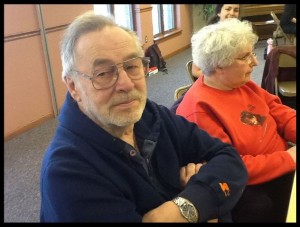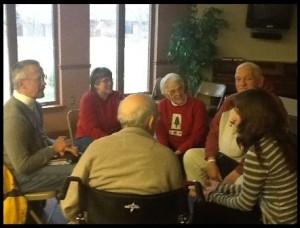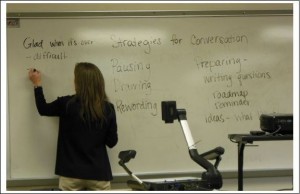10-01-2013
Aphasia distorts the message, and aphasia affects how you feel!
The Chippewa Valley Aphasia Group is following a curriculum that gives our group members a chance to review resources and practice together. This process will help our members to define what they want to practice and how they may practice on their own.
We are exploring together how practicing may help your messages to be more efficient, and how practicing may help you to feel more confident.
The CVAG staff encourages our members to follow some basic principles for our practice:
A. Be Prepared
B. Get in the ballpark (follow a little structure but be flexible)
C. Do it a lot
D. A little review can help build a plan.
We chose Conversation Practice for our first unit. We spent a bit of time talking about conversation topics, what “troubles” can happen in conversation, and how “troubles” may be managed. We agreed that most satisfying conversations have a balance of contributions to the topic and tolerance for occasional troubles.
Our group practice involves some important Preparation. We encourage group members to make lists of activities or use photos of interest when preparing for a conversation. These lists or photos can serve as topics of conversation. Next we encourage Partner Support. We offer suggestions and demonstrate how to wait, listen and to use all modalities when in conversation. Finally, we encourage Flexibility. If a new topic arises, follow along and contribute as best as you can. We imagine that Practicing Conversation is like putting pennies in a cup, and the contributions of both partners add up!




